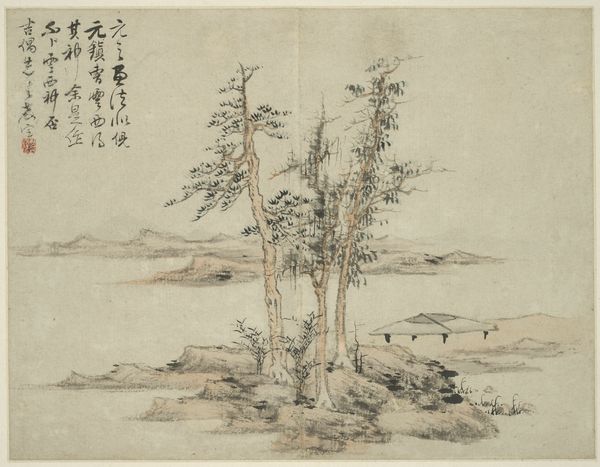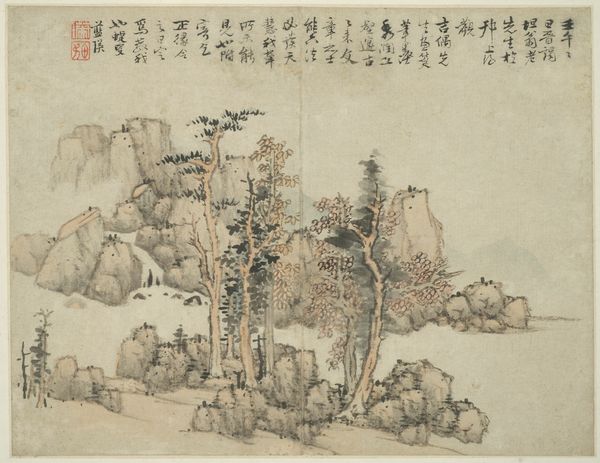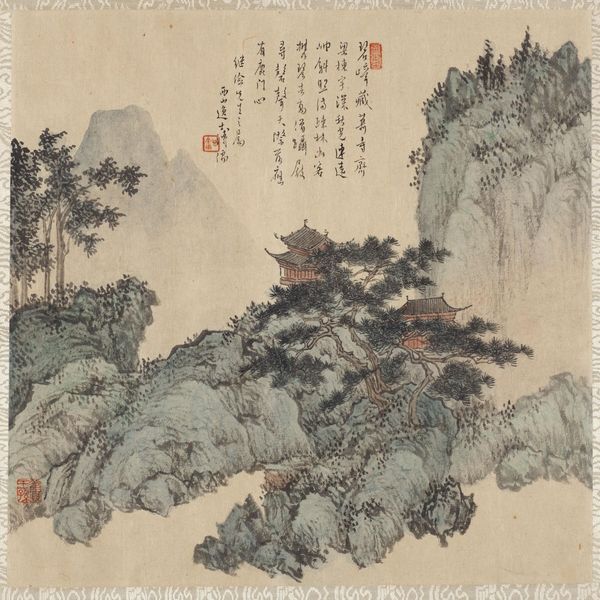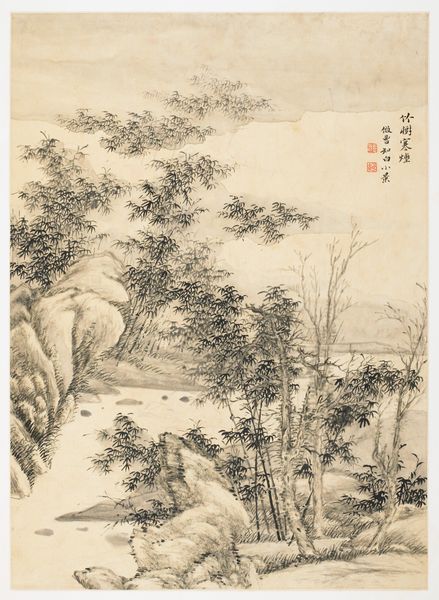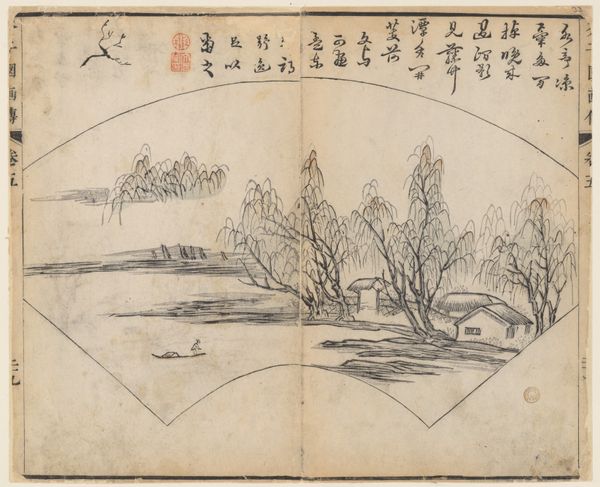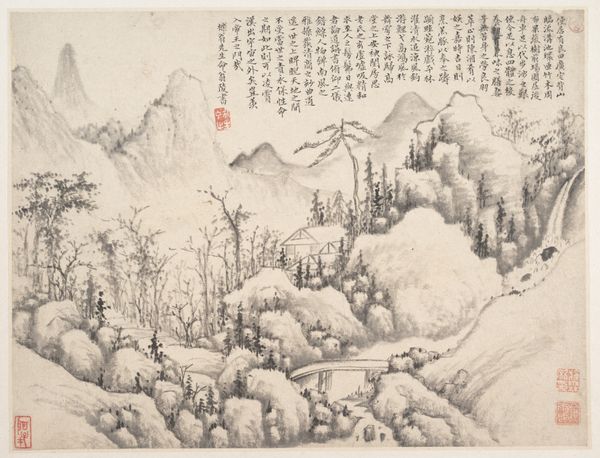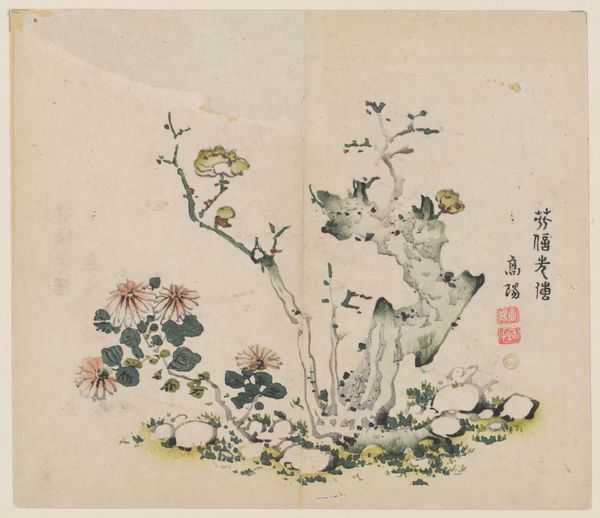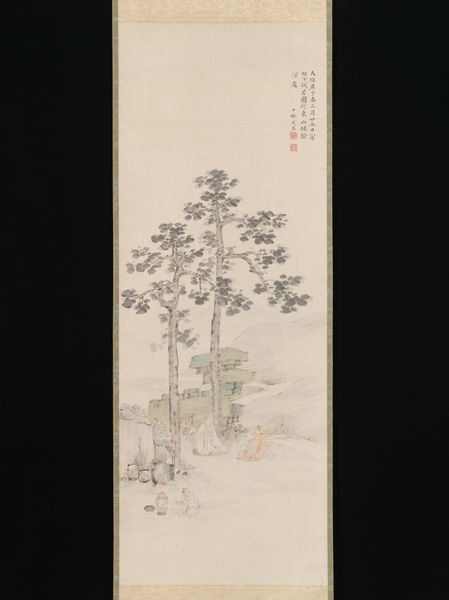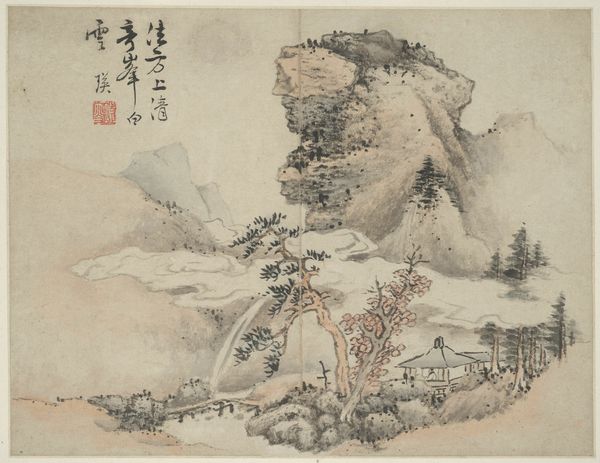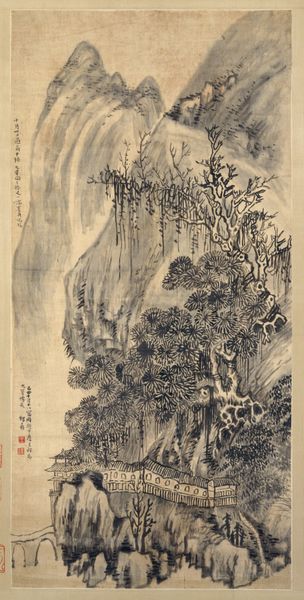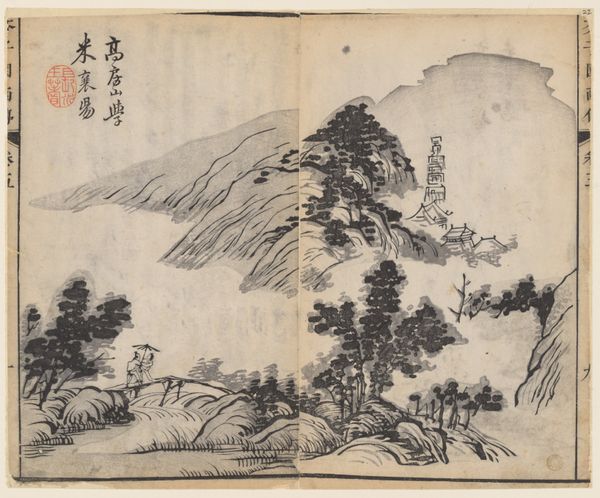
Landscape in the Style of Ancient Masters: after Wang Meng (c. 1308-1385) Possibly 1368 - 1644
0:00
0:00
painting, paper, ink, mural
#
painting
#
asian-art
#
landscape
#
paper
#
ink
#
ancient-mediterranean
#
mural
Dimensions: 31 × 40.7 cm (12 × 16 in.)
Copyright: Public Domain
Curator: Right now we’re looking at a piece from the Art Institute of Chicago called Landscape in the Style of Ancient Masters: after Wang Meng (c. 1308-1385). It's attributed to Lan Ying and likely dates somewhere between 1368 and 1644, done with ink on paper. Editor: Huh. My first thought is quiet. It’s this soft, hazy scene that makes me think of a half-remembered dream, you know? Like trying to grasp a memory of being in nature. It's distant, but the gentle greys are compelling. Curator: It’s compelling, I think, because it taps into the social and historical contexts of scholar-artists, drawing explicitly from Wang Meng’s established artistry. Consider what it meant to engage with tradition during periods of political uncertainty in China. Homages could operate as forms of coded cultural and political critique. Editor: Coded critique, that’s intense. I just saw some old buddies chilling by the water, sharing what looks like gossip, surrounded by serene mountains and trees. Everything feels so deliberate, yet breezy at the same time. A total escape. Is it me or can we see some humor in it? It also makes me want to just grab my stuff and venture out! Curator: Humour certainly has a place! I find it fascinating how these artists would imbue their work with symbolism. Consider the very act of copying, right? Referencing Wang Meng wasn’t just about replicating skill, but aligning oneself with a particular artistic and political lineage. It's interesting to think about what narratives about ancient China were valued in 1368-1644. Editor: Hmm, artistic and political lineage…like name dropping your influences, old-school style. Maybe that’s where my ‘chill’ vibe comes from! Artists doing artist stuff; very reassuring! Curator: Yes, but doing "artist stuff" while carrying forward cultural meaning. It invites us to reconsider our relationship with legacy, power and our contemporary understanding of East Asian cultural and art history. It's about legacy, subversion, identity, and artistic strategies interwoven. Editor: Well said. Looking at it now, it has less to do with "escape" and more to do with how it mirrors and refracts. Thank you, I like it even more! Curator: Absolutely. And I hope it encourages all of us to interrogate the layers beneath what we see in art and life.
Comments
No comments
Be the first to comment and join the conversation on the ultimate creative platform.
